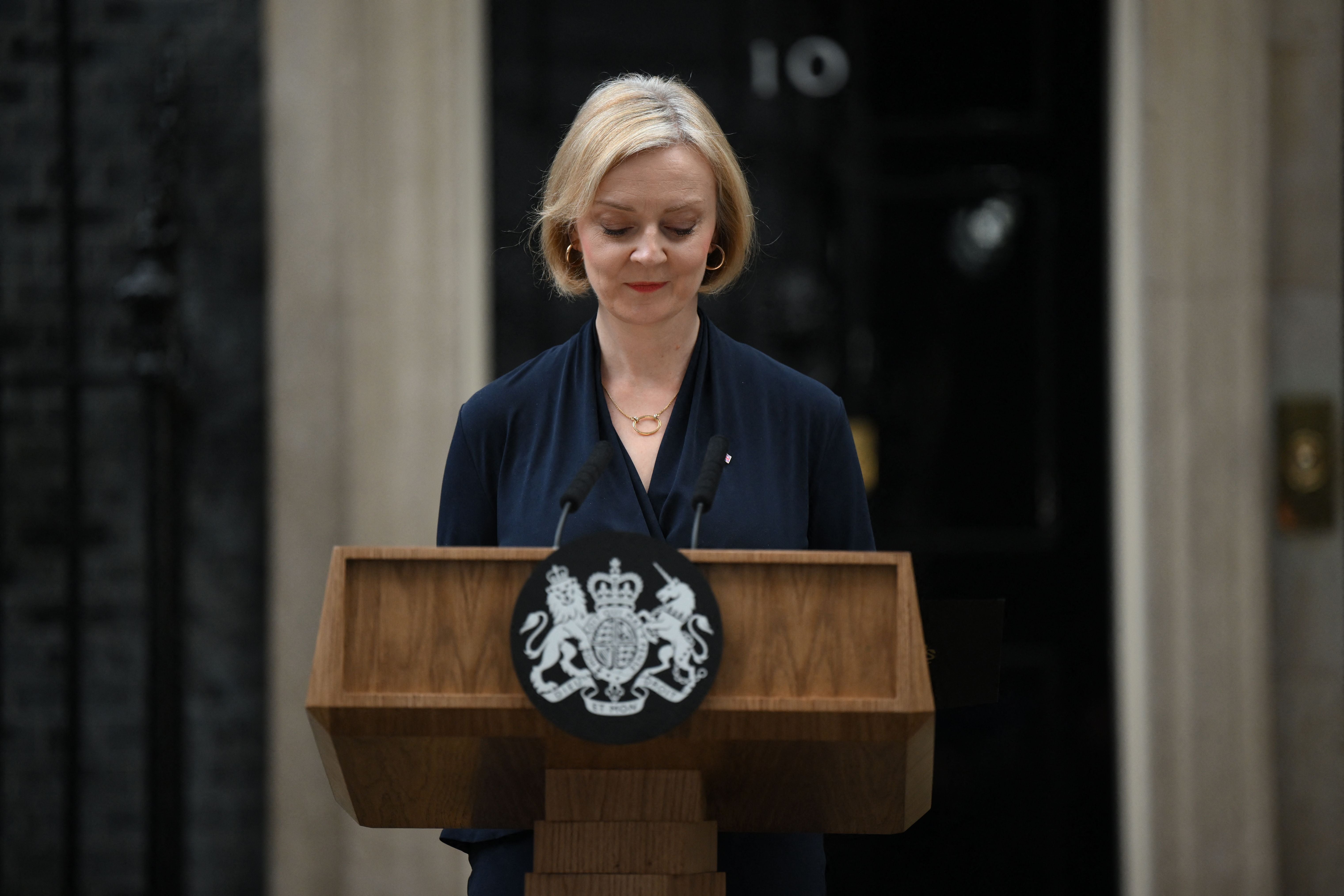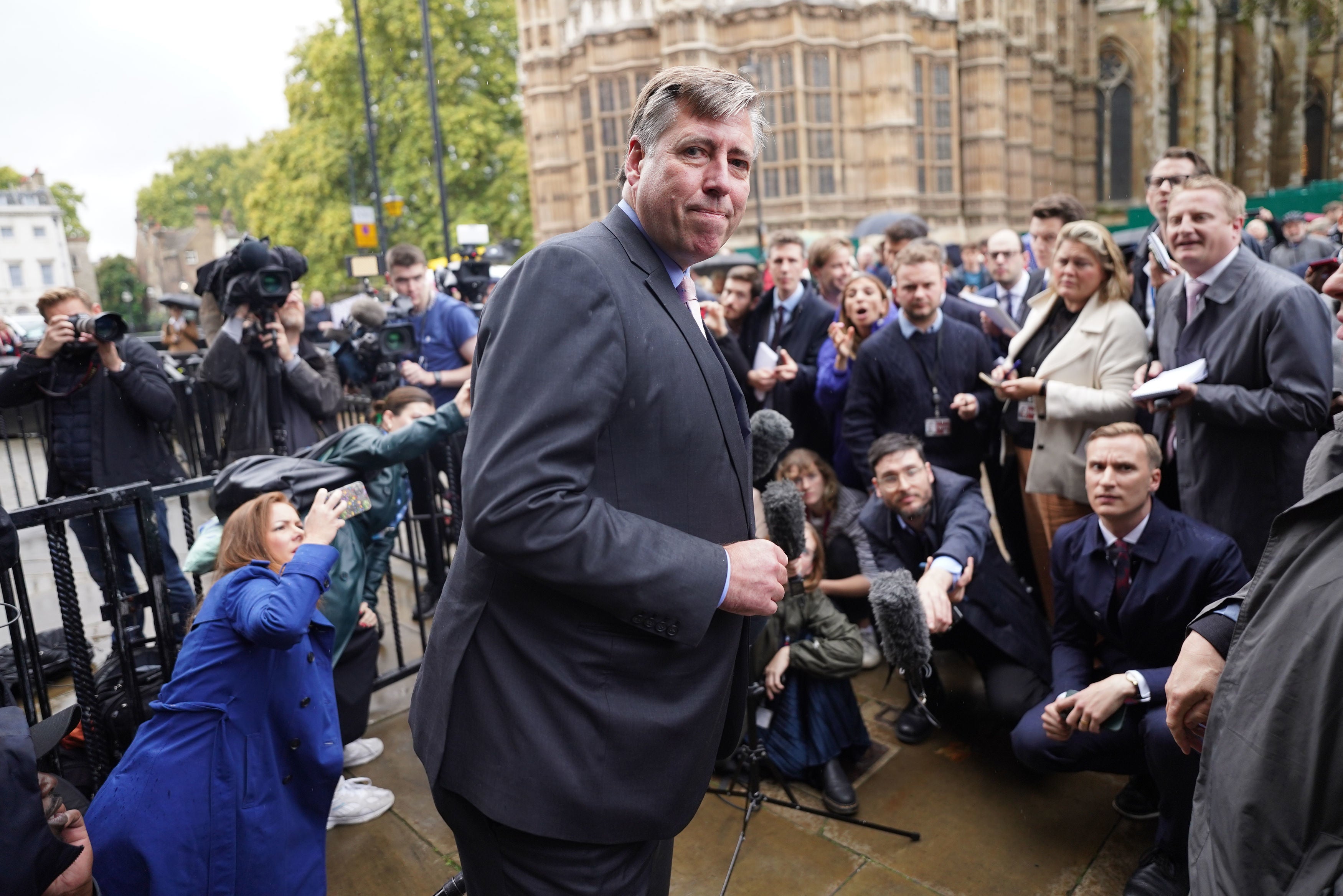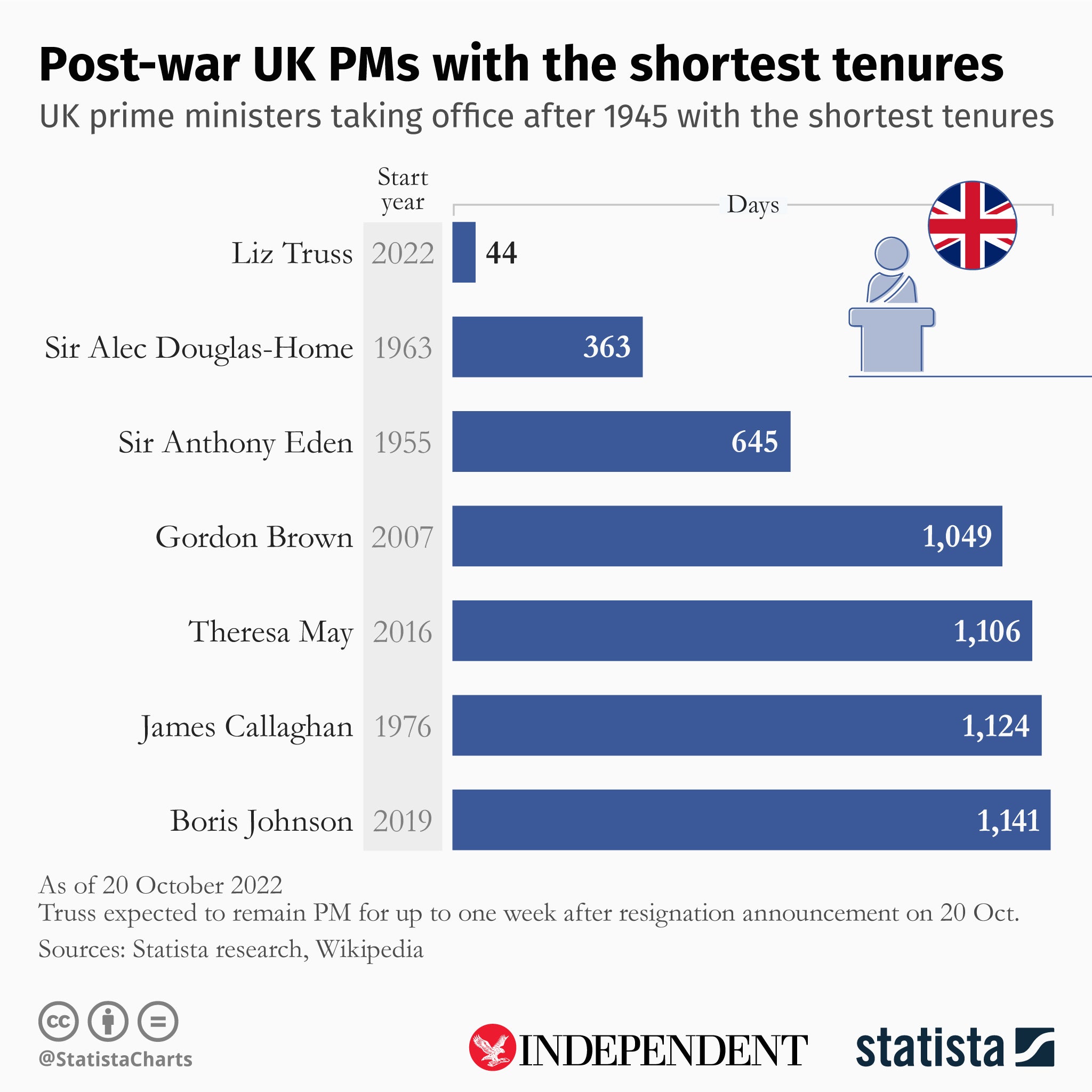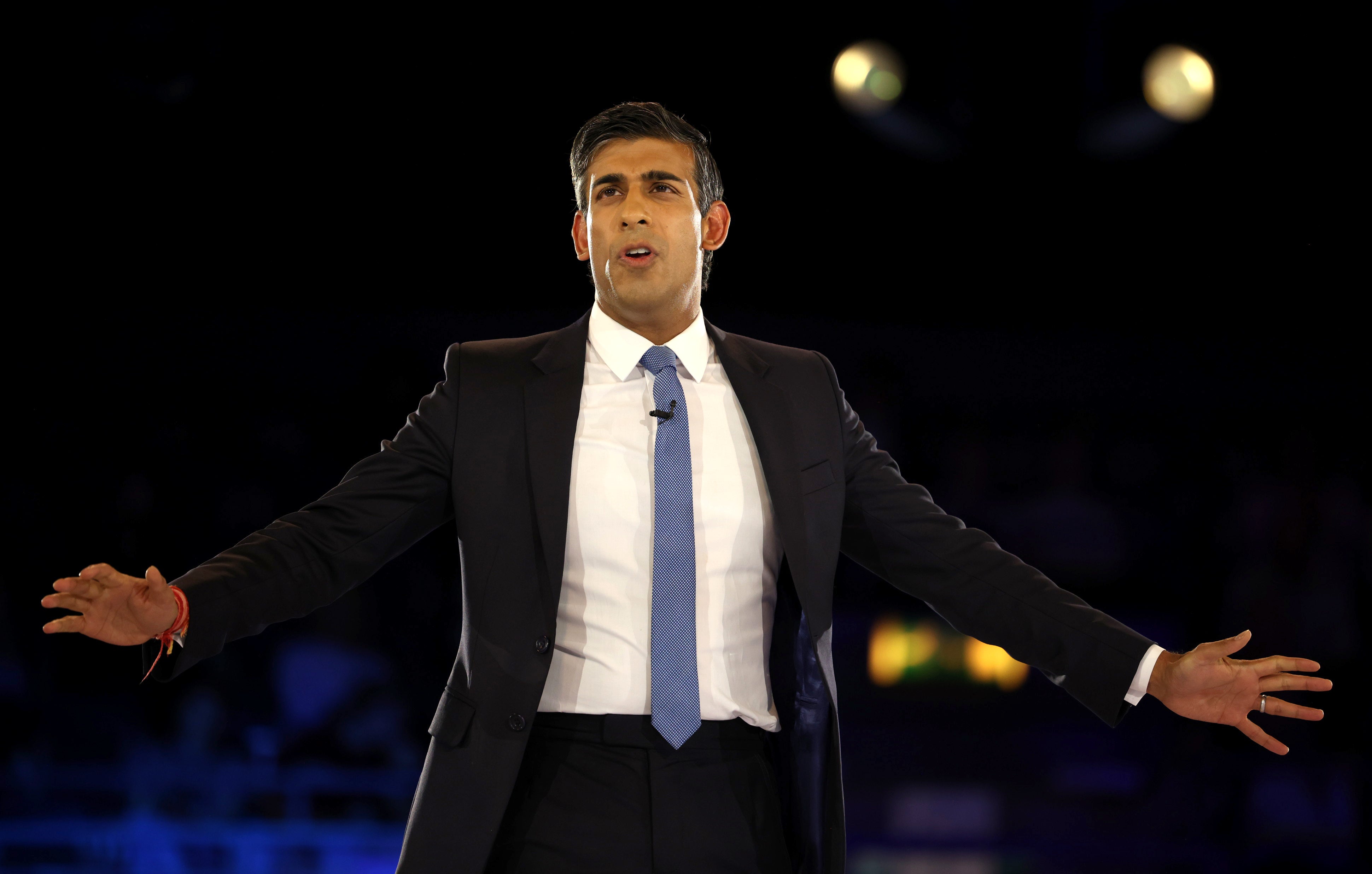How will Tory leadership race to replace Liz Truss work?
A successor will be chosen by the end of next week, the Party said

Your support helps us to tell the story
From reproductive rights to climate change to Big Tech, The Independent is on the ground when the story is developing. Whether it's investigating the financials of Elon Musk's pro-Trump PAC or producing our latest documentary, 'The A Word', which shines a light on the American women fighting for reproductive rights, we know how important it is to parse out the facts from the messaging.
At such a critical moment in US history, we need reporters on the ground. Your donation allows us to keep sending journalists to speak to both sides of the story.
The Independent is trusted by Americans across the entire political spectrum. And unlike many other quality news outlets, we choose not to lock Americans out of our reporting and analysis with paywalls. We believe quality journalism should be available to everyone, paid for by those who can afford it.
Your support makes all the difference.Liz Truss has resigned as Tory leader after a chaotic 44 days in office, with a new prime minister expected to be in place by the end of next week.
The Tories will now scramble to find a replacement who will become the third leader in two months following a gruelling leadership contest this summer. It means the UK will have seven living prime minister’s for the first time ever.
A little over 24 hours after insisting she was “a fighter, not a quitter”, Ms Truss stood at a lectern in Downing Street and said she had informed the King she was resigning as Tory leader.
She said she recognised she “cannot deliver the mandate” which Tory members gave her a little over six weeks ago when she replaced Boris Johnson.
Ms Truss assured the nation the Conservative Party will remain on a path to deliver its fiscal plan and confirmed she will remain in office until her successor is chosen but she gave little detail of how the process would be conducted.
Her announcement followed talks with the chair of the 1922 Committee of backbench Conservatives, Sir Graham Brady, and Conservative Party chair Jake Berry - the former later announced how the process would work.
How will Liz Truss’ successor be chosen?
Following Liz Truss’ announcement outside of No 10 Downing Street, Sir Graham gave an announcement of his own where he revealed the next steps in the process of selecting a new leader.
Firstly, the process will be nowhere as long as this summer’s leadership contest which included months of campaigning, debates and hustings.
Sir Graham confirmed that a new leader will be selected by the end of next week before the fiscal statement is announced on 31 October, which is intended to reassure the City of London that the government has a plan to repair the nation’s finances.
He said there was an expectation that Tory members would be involved in the process, but “I think we're deeply conscious of the imperative in the national interest of resolving this clearly and quickly”.

The contest to replace Mr Johnson lasted longer than Ms Truss's premiership, paralysing the government at a time of a cost-of-living crisis.
It would be possible for the 1922 Committee to engineer the rules to ensure that only candidates with a very large number of MPs supporting them could go through - something which could, in effect, result in a coronation if the threshold was so high that only a single contender emerged.
That would avoid the need for a lengthy contest involving party members across the country casting votes.

Sir Graham remained vague on the matter, telling reporters: “The party rules say there will be two candidates unless there is only one candidate.”
However, he added that Conservative members have been “consulted.”
Allies of former leader Mr Johnson pushed for him to make a comeback, despite being forced out earlier this year, while Rishi Sunak, who defeated Ms Truss among MPs in the last contest but lost out among party members, also has supporters at Westminster.
Chancellor Jeremy Hunt was quick to rule himself out as he focuses on calming the financial markets, while Michael Gove will also sit out the contest.

Commons leader Penny Mordaunt, viewed as a potential leadership contender after coming third among MPs in the last contest, said she would “keep calm and carry on”.
Other names bandied around as potential successors have included Ms Braverman, Ben Wallace, Kit Malthouse, Grant Shapps and Sajid Javid.
Defence Secretary Mr Wallace, a popular figure within the party, has insisted he wants to remain in his current job.



Join our commenting forum
Join thought-provoking conversations, follow other Independent readers and see their replies
Comments